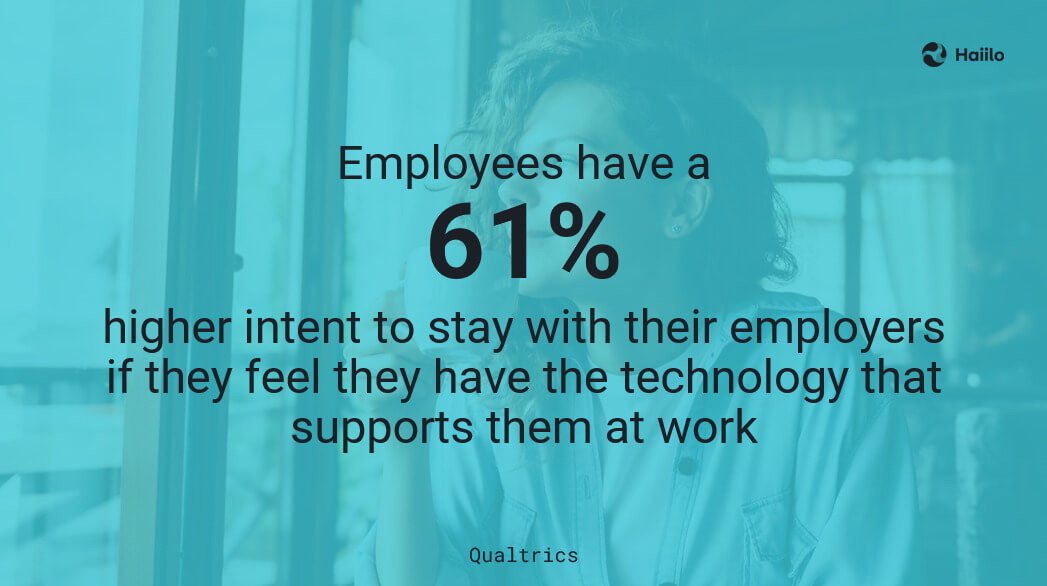Why does every company need to adapt to the smart ways of working? Why do organizations need to consider using AI? How can you benefit from agile and flexible work arrangements, and why they are not going anywhere?
If you have been trying to answer some of these questions, you have come to the right place!
In this blog, we will go over the characteristics of smart working and explain why every company, small or enterprise, should adopt this framework without second-guessing it.
What Is Smart Working
Smart working is a fairly new concept introduced to provoke organizations to adapt to the future of work and new ways of working.
According to this framework, people are at the center of everything, and it focuses on enabling employees to be more empowered to choose their own ways of working in order to achieve maximum productivity.
Smart working is about more than just completing tasks. It is about choosing the best and most productive ways and technologies to achieve business goals. For this, cross-departmental collaboration is necessary, and working in silos is just not an option.
Even though some organizations argue that flexible work arrangements may hurt their productivity and financial stability, research has proved the opposite.
Additionally, smart working relies on the right workplace technology that is user-friendly, well-integrated, and powered by AI. A digital workplace environment needs to enable employees to work smarter, not harder. Unfortunately, the amount of different tech solutions companies use today can be one of the biggest productivity blockers.
Start working smarter today with Haiilo communications platform!
The Characteristics of Smart Working vs. Traditional Working
Smart working has certain traits and characteristics that are significantly different from traditional ways of working. Let’s take a look at the 6 biggest differences.
1. Agility and flexibility
Unlike traditional ways of working, smart working focuses on agile methodologies that enable people to better adapt to change and unexpected workplace situations. It requires organizations to move away from strict processes and procedures and become more agile. Proper change management encourages people to focus on the outcome, not the blockers.
📹 Check out our Masterclass about top 5 change management models.
Smart working challenges companies to offer more flexible work arrangements. Traditional ways of work are based on the concept of owning people’s time.
Today, some organizations are more sceptical about working from home, but flexible working arrangements have many benefits and we will discuss them later in this blog.
2. Cross-departmental collaboration
According to PwC survey, 55% of organizations work in silos and are fighting the negative sides of it every day. Smart working requires all departments within an organization to work towards a common goal. In other words, organizational silos need to be broken down at all costs so that teams in different departments can easily collaborate on various projects.
Projects with strong cross-functional collaboration in addition to executive support have a 76% success rate, according to Stanford-based transformational leadership expert Behnam Tabrizi. But success drops to 19% when projects have only moderate cross-functional support.
3. Bottom-up feedback
Within companies that still practice the traditional way of working, top-down feedback is a must, while bottom-up or employee-to-manager feedback needs to be practiced.
Smart way of working encourages and drives bottom-up feedback where employees are invited to regularly give feedback about and to their superiors.
Most companies that truly care about their employees’ experience at work know how important employee-manager relationships are. So most of them have implemented pulse surveys to help their managers understand how to better lead their teams.
4. Organizational alignment and workplace transparency
When employees are aligned with the company’s north star, the chances to get to that start are much higher. Moreover, if employees understand and live by your organization’s core values, they should know exactly what’s expected from them.
Workers in companies that practice smart working will always evaluate activities, projects, and initiatives based on their understanding of the company’s ultimate goals.
However, organizational alignment can’t be achieved without complete workplace transparency. Yet, 50% of employees say that a lack of transparency holds their company back. So employers need to openly talk about the good and the bad because this is the best way to gain trust and commitment from employees.

5. AI, digital workplace, and integrated technology
Smart employers understand the power of technology in producing better outcomes. Workplace tech is one of the fastest-growing industries ever. However, according to Qualtrics research, only 30% of employees said their experience with their company’s technology exceeds their expectations.
While having a great tech stack in your organization can also break your employees’ productivity and be the main source of information overload in the workplace.
Also, for technology to work, it must be integrated.
Take, for example, all the communication channels your organization uses. There are instant messaging platforms, project management tools, email, intranets, and document-sharing tools.
For internal communications to work, these solutions should be well integrated and talk nicely with each other. This is the only way for employees to receive important communication and take advantage of critical information.
AI is another technology component. While some organizations are afraid of the outcomes of AI, others have been using it successfully for years. Others are just getting started with tools such as ChatGPT. So AI, when used mindfully, can be one of the biggest productivity boosters for your organization.
6. Data-driven decisions
Smart working means making decisions based on data without guessing. While this may not always be possible, organizations that have adopted smart ways of working always strive to be more data-driven.
So when choosing workplace technologies, look for advanced reporting and analytics features and functionalities. For example, if you are investing in an employee app, internal communications platform, or employee engagement software, make sure that they enable you to measure your initiatives and understand their ROI.
The Benefits of Smart Working
Most of the above-mentioned smart working characteristics have a direct or indirect impact on employee productivity, loyalty to the organization, mental health and wellbeing, and an organization’s ability to attract talent.
So let’s dig deeper into why every company should adopt this concept.
1. Improved productivity
In the Gartner 2021 Digital Worker Experience Survey, 43% of respondents said that flexible working hours helped them achieve more productivity. Another survey conducted by Airtasker, showed that remote employees worked 1.4 more days every month, or 16.8 more days every year, than office workers. When people feel like they have more freedom, they are under less stress and are usually motivated more to do their best.

Even though all the other smart working characteristics positively impact employee productivity, workplace technology is the most obvious one. According to research, employees working for companies that make the necessary business apps readily available and accessible report 17% less time spent on manual processes and 16% faster decision-making.
2. Higher employee retention
Workplace flexibility is a smart way to boost employee retention in an organization. Research by the Boston Consulting Group (BCG) indicates that up to 75% of digital workers are looking to change jobs within two to three years. One of the key reasons employees change jobs is the need for more flexibility. A Microsoft study found that more than two-thirds of employees wanted flexible working arrangements for them to stay.
Furthermore, good organizational alignment, proper cross-departmental collaboration, and proper workplace tech can also have a positive impact on employee retention and turnover. According to research, employees have a 61% higher intent to stay with their employers if they feel they have the technology that supports them at work.

3. Better employer brand and talent attraction
Companies that have mastered smart working are also enjoying better employer brand and the ability to attract the best talent out there.
For example, research from CareerBuilder revealed that jobs allowing employees to work remotely received seven times more applications than in-person roles the previous month. Another study conducted by Manpower Group Solutions reported that nearly 40% of global candidates said that workplace flexibility is among the top three factors they consider.
4. Less stress, higher morale, and better employee wellbeing
Let’s start with flexible work arrangements. According to research, remote workers report a 25% decrease in stress levels, while 90% of employees feel that flexible work arrangements increase morale. When employees have more freedom to choose how they work, they simply have a member work-life balance and are happier at their jobs.
Furthermore, 33% of employees said a lack of open, honest communication negatively impacts employee morale. So companies with smart working habits that practice complete workplace transparency are more likely to see high morale among their workers.










